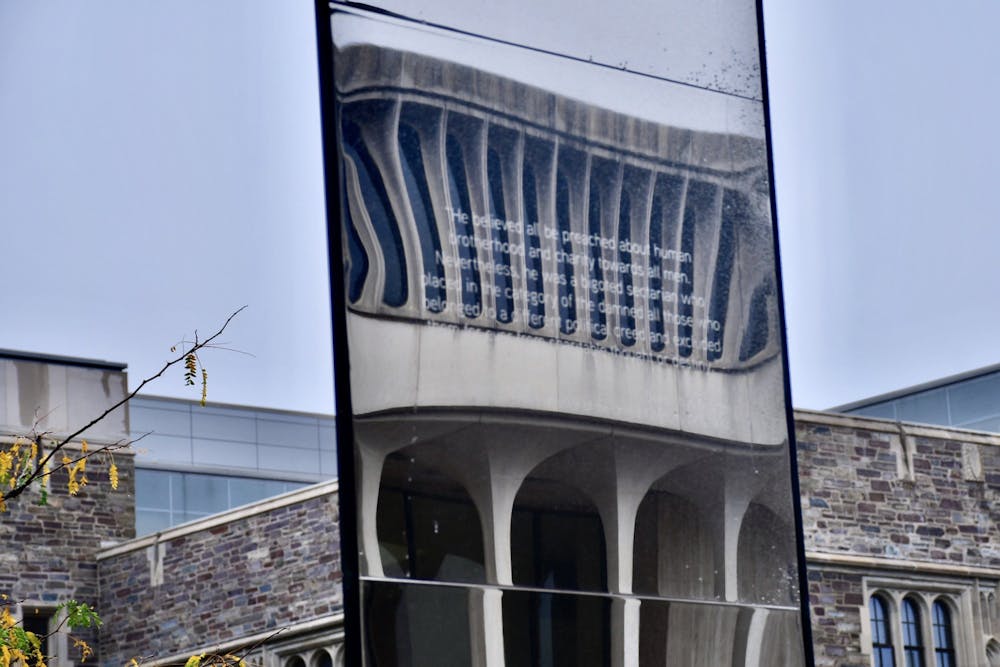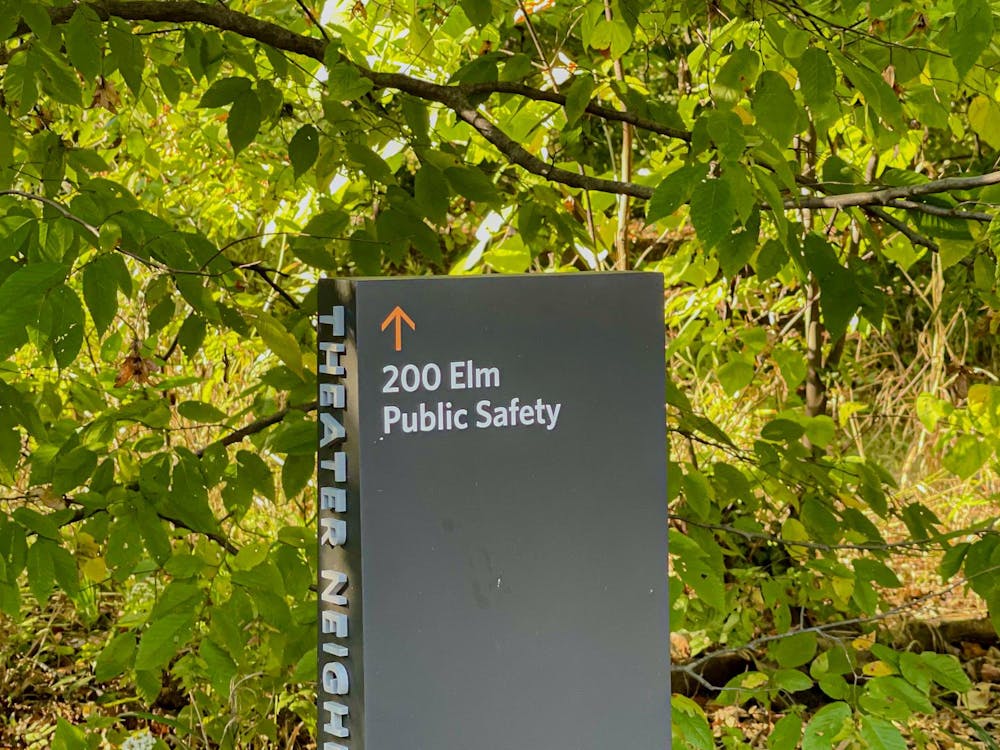“The distinction between memory and memorialization is of cardinal importance. So is the relation between them.”
Half a page into his January 2016 letter to the Wilson Legacy Review Committee, David Kennedy, professor of history emeritus at Stanford University, made clear that the right questions had to be asked in the consideration of Woodrow Wilson’s legacy.
Having written plenty about Wilson throughout his academic career, Kennedy was one of numerous scholars tapped by the Committee to contribute expertise on Wilson’s legacy at Princeton and beyond. His letter explained that he intended not to comment on the particularities of the campus debate but to provide “more general thoughts” about Wilson and collective memory.
Kennedy’s thoughts, of course, would prove invaluable in framing the now-vibrant national dialogue around naming, “denaming,” and renaming.
The decision by the Board of Trustees to remove Wilson’s name from the eponymous policy school and residential college, originally prompted and more recently catalyzed by student-led activism, made national headlines and sent ripples across the higher education realm. Many lauded the decision as long-overdue — but the change also fueled a spate of critiques, admonishments, and even calls for the Board to reconsider its decision.
A serious accusation appeared in the public dialogue: by removing Wilson’s name from the policy school and residential college, Princeton was engaging in revisionist history.
This idea, as applied to the years-old Woodrow Wilson School debate, was not new. One alumnus called the original efforts to take down Wilson’s name an attempt to “erase history and whitewash it and put something else in its place.” A change.org petition that circulated in 2015 branded the demand for name removal “an alarming call for historical revisionism [seeking] to eliminate vindication of a significant historical figure who, despite his flaws, made great contributions to this University.”
It is difficult to understate the severity of such a claim directed at an institution whose purported mission is to educate through rigorous analysis of fact. Moreover, while the removal of Wilson’s name is an isolated instance (contextualized by years of activism and public debate), the process and practice can reasonably be thought to reflect on similar considerations about other names adorning buildings, halls, and roadways on campus (not to mention eponymized positions and programs).

It’s well worth asking the question, then — is name removal really historical erasure?
First, we should be clear about the tradition of naming. The act of plastering a person’s name on a building is at once commonplace on Princeton’s campus and detached from the University’s primary educational mission. Name allocation is nearly always either donor-requested or honorific; the former sort is largely tied to development, while the latter sort “must advance University values and policies.”
As such, most donor names retain little qualitative meaning for students but become deeply embedded in the collective psyche, used and abbreviated so endlessly that many have been effectively dissociated from their original owners. (For example, how often does a walk through Frist Campus Center really evoke reflection on the legacy of its namesake, William H. Frist ’74?)
Honorific namings, many recognizing the achievements of more widely known public figures, can fade into the campus geography as well. But some names retain a certain familiarity for members of the Princeton community — positive or negative. Changing cultural standards have allowed for a more vocal opposition to their continued reign, often manifesting as calls for renaming.

This leads us to a second interrogation, this time into the processes of removal and replacement of names. A November 2016 letter from Yale’s Committee to Establish Principles on Renaming provided the following guidance in the campus dialogue about John C. Calhoun, a champion of slavery and white supremacy whose name adorned a residential college at the time:
“The decision to change a building name is emphatically not a decision to remove a book from a library, change the contents of a syllabus, strike an idea from a course discussion, or rule out a dining hall conversation. In its building names and its campus symbols, the University communicates values, confers honor, and expresses gratitude to those who have contributed to its mission. In other words, the University itself speaks through its building names.”
Here, Kennedy’s reflections ring true: memorialization and memory are different things, and abstention from the former does not imply destruction of the latter.
In ignoring this fact, accusations of historical erasure mischaracterize name removal as anti-educational. They also fail to acknowledge the incredible teaching power of the act. In reality, relatively few people on Princeton’s campus — and around the country — understood the complexity of Wilson’s legacy, let alone the nature of the harm he caused during his time as President of Princeton and of the United States, before student activism and administrative responses in recent years made it abundantly evident.
As it turns out, we learn very little about people from merely seeing their names on buildings. Rather, we render ourselves susceptible to an inflated or simplified version of their lives, distorted by a laser focus on only one dimension or on the “good parts” — a sort of revisionism in itself. But we can learn a lot when critical interventions take place, and when debates about the qualities of a person’s legacy are fostered and encouraged.
On Princeton’s campus, the former president’s material legacy is hardly imperiled by the name removal. The Woodrow Wilson Award will still be the highest distinction for an undergraduate alumnus or alumna, and numerous other uses of Wilson’s name (in professorships, fellowships, other prizes, and events) will seemingly remain intact.
Importantly, though, Wilson’s lasting image has been altered. No longer is he Woodrow Wilson, visionary statesman and progressive politician who also happened to be a racist. Now, for many, he is Woodrow Wilson, racist policymaker and white supremacist who also happened to advance progressive ideals.
To be clear, many people already saw Wilson in this way even before the question of name removal was raised. But recent activism has caused this particular image to take hold for many more who may have known nothing about the 28th U.S. President up until this point. No longer memorialized through the Woodrow Wilson School for his achievement in specific areas of academia and public policy, Wilson has been brought down to earth, made the subject of renewed and vigorous debate about American ideals and social reality.
Whether this new balance of Wilson’s legacies is merited can and will be debated for years to come. But any historical figure’s image should be an ongoing exploration, not static but dynamic in nature, spurring equally dynamic dialogue whose arguments end not declaratively but interrogatively.
Amidst this important conversation, the Board of Trustees has a unique opportunity to reimagine the power of names on Princeton’s campus, and to protect the well-being of all its students in the process.
The CPUC Committee on Naming, formed in response to the BJL’s demand that Woodrow Wilson’s name be removed from the policy school, has in recent years been charged with parsing through naming options and making recommendations on naming decisions to the Board. The committee, composed mostly of faculty, staff, and current students, frequently conducts thorough investigations into the background of every candidate for new naming so as to ensure that no “record of malfeasance” exists that might make it “inappropriate for the University to benefit from or establish a long-term association with the person.”
This standard is not only subjective but impossible to meet thoroughly and consistently. The best the committee can do is scour Google for public examples of contemporarily defined wrongdoing and hope that no blemishes are uncovered after the recommendation is made.
But we should not be forced to choose between absolute condemnation and wholehearted praise. If we must continue to cling so helplessly to naming as a tradition, we should defuse the ticking time bomb of eponymic memorialization by normalizing public scrutiny — not as behavior deemed oppositional to naming practices, but as a welcomed endeavor. When it is determined that a namesake’s legacy is harmful to members of the University community, we should think less in terms of loss and more in terms of education and growth.
To that end, the University should divert its energy from purist searches for untouchable names and instead practice active encouragement of pedagogical design. Princeton has the power to lead the way in redefining the paradigm of giving, receiving, and remembering at a major academic institution — to express measured gratitude, not unqualified veneration, for the contributions of donors and public figures.
As an academic community, we have a great opportunity to embrace these difficult conversations. We should get comfortable with a more human idea of the people we’ve grown up learning to revere without scrutiny. In the process, we should actively disarm names as a source of potentially harmful power on our campus by avoiding blind reverence and leaning into new educational opportunities.
By ending its attachment to memorialization and renewing its commitment to deepening and widening the collective memory, the University will advance its mission by leaps and bounds. Then, finally, Princeton can get to the business of being “in the nation’s service and the service of humanity.”
Remy Reya is a senior in the Princeton School of Public and International Affairs. He can be reached at jreya@princeton.edu.








